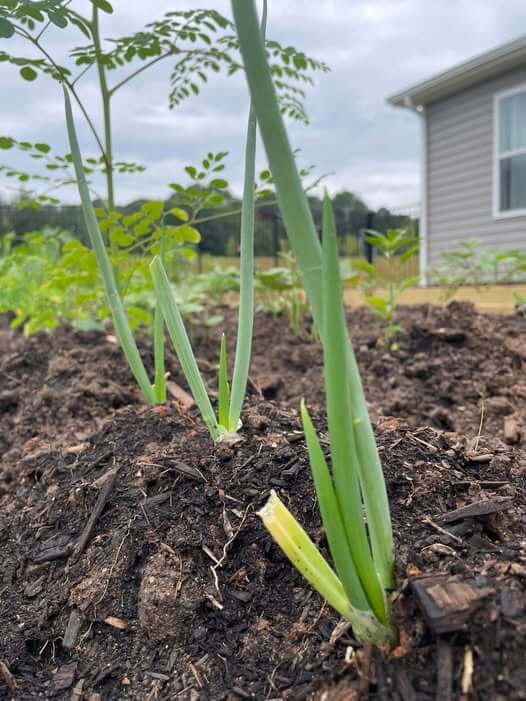When you first get into gardening, one of the most common pieces of advice you’ll hear is to plant vegetables in a location that receives around eight hours of sunlight.
And that advice isn’t necessarily wrong, it’s actually true. Many common vegetables thrive with 6 to 8 hours of sunlight daily. Tomatoes, eggplants, cucumbers, squash and many others..
But what if your garden doesn’t receive much sunlight? Do you just give up your dreams of growing a thriving garden altogether? Of course not!
Pretty much all gardens have areas with more sun and areas with more shade, the important thing is just to know what is best to plant there.
Below, I’ll list 10 vegetables that grow well in a shady garden space, with some preferring low light conditions.
Turnips

Turnips are hardy and thrive in cool weather, and don’t really need sunlight as much as other root plants. They do prefer sun (about 6 hours) to develop large, flavorful roots, but they’ll grow to maturity even without it.
Plant turnips in loose, well-draining soil in the spring or fall, about 1/2 inch into the ground or a container, about 2 inches apart.
I particularly like turnip greens, the leafy tops of the plant. They can be added to salads or even cooked as a side dish.
Spring Onions
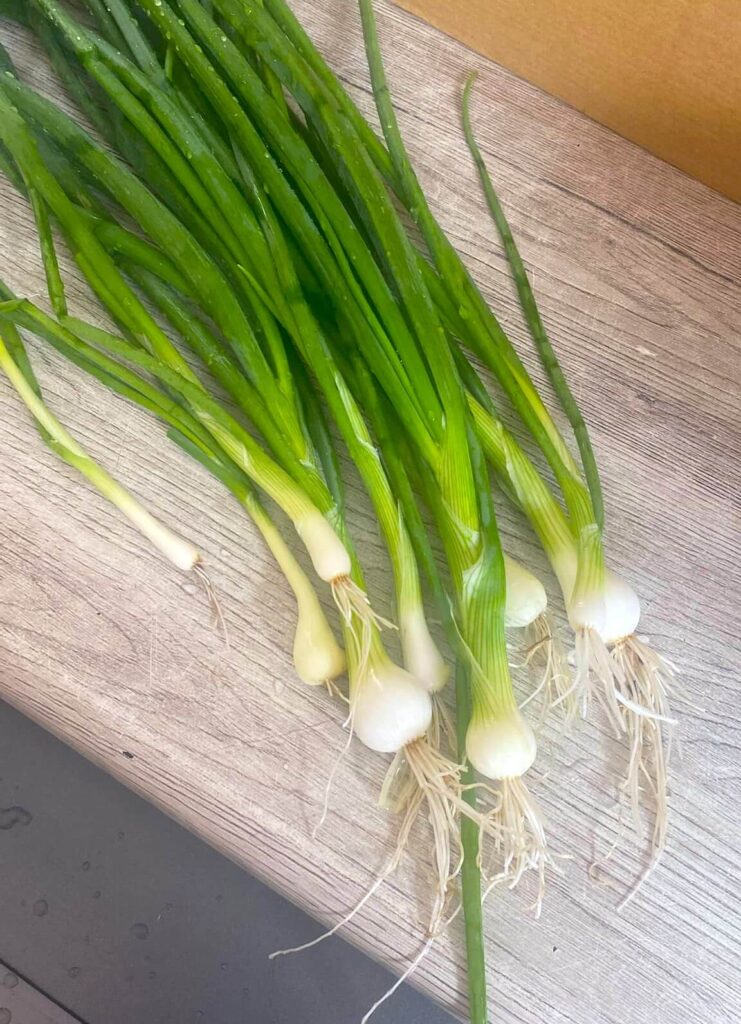
Spring onions (also known as scallions) aren’t the fussiest plants. Just plant them in well-draining, slightly acidic (pH 5 to 7) soil, and they’ll grow in whatever sunlight they receive!
Like many of these plants, they’ll probably mature more slowly in shaded areas, but they’ll still produce a respectable (though slightly smaller) harvest.
And since they’re practically impervious to winter freezes, you can cultivate them year-round.
For continuous supply, only cut the tops when you harvest and leave the rest of the scallions underground.
Spinach

Spinach is a cool-season crop best grown in mid- to late spring and fall. It thrives in cool, shady environments and produces a harvest as short as 25 days after sowing.
Too much intense heat or full sun exposure can cause it to bolt or prematurely flower. You want to avoid bolting because bolted spinach tastes bitter and contains fewer nutrients.
Peas
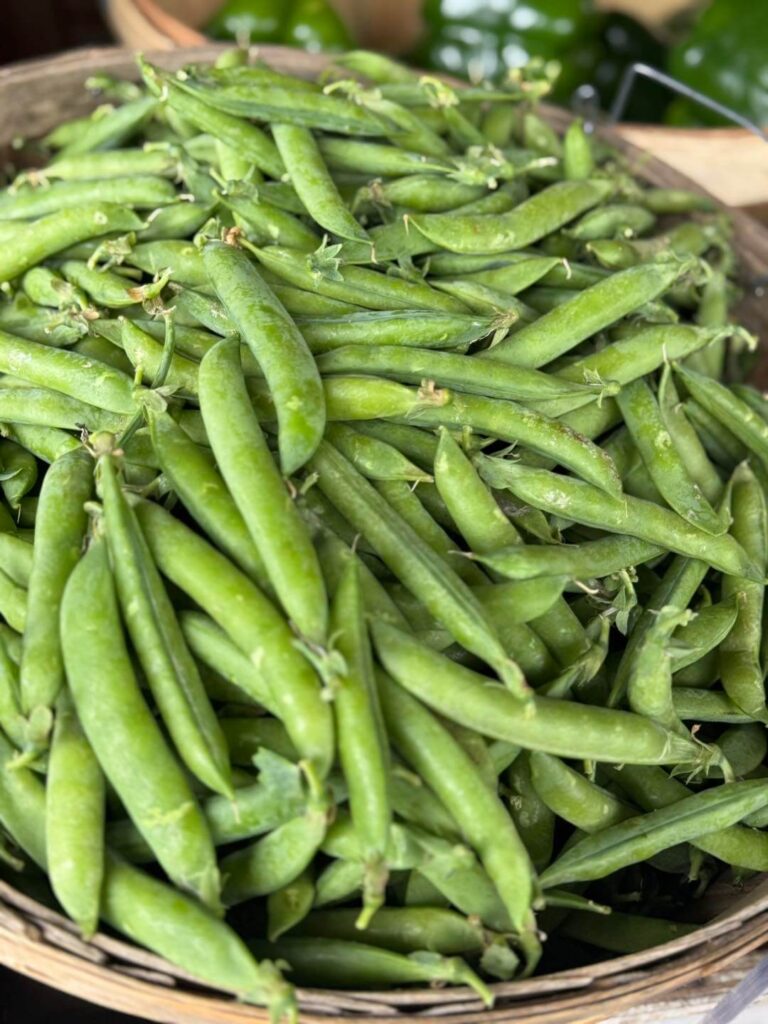
Snap peas, garden peas, and snow peas are another cool-season vegetable that grows well in shade.
Shade can help lengthen their growing season and protect them from heat stress. The harvest may not be as bountiful as it would be if they received sun daily, but you can still expect a healthy yield in partially shaded conditions.
For best results, sow seeds around 4 to 6 weeks before the last spring frost date. Use loose sandy loam soil and add organic fertilizer like compost or well-rotted manure to improve drainage and soil fertility.
Broccoli (And Other Brassicas)
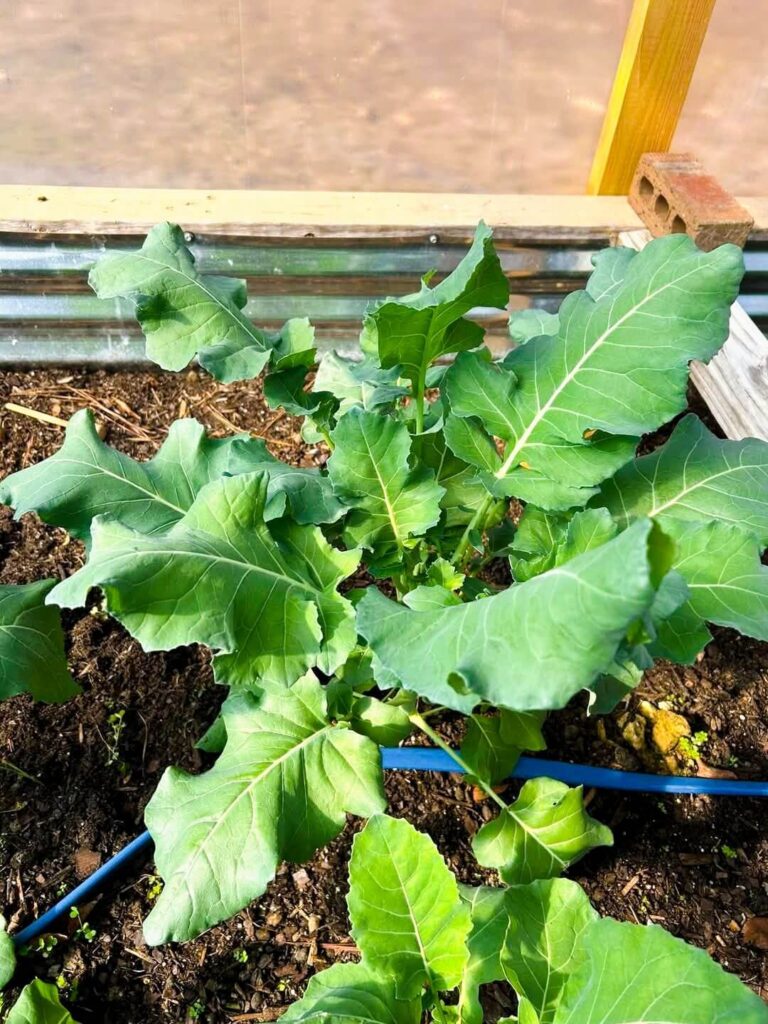
Some brassicas also tolerate low-shade conditions, in particular broccoli, kohlrabi, cauliflower, and brussels sprouts.
They may not grow as large or full as they would, but they can still produce nice edible heads and leaves in partial shade.
Like spinach, brassicas tend to bolt when exposed to full sunlight, so partial shade is actually preferred during warmer temperatures.
Just be mindful of the slugs in the area when planting brassica plants. Slugs congregate in shady areas and love to munch on brassicas, so consider using natural deterrents such as crushed eggshells, copper tape, or diatomaceous earth around the base of the plants.
Herbs
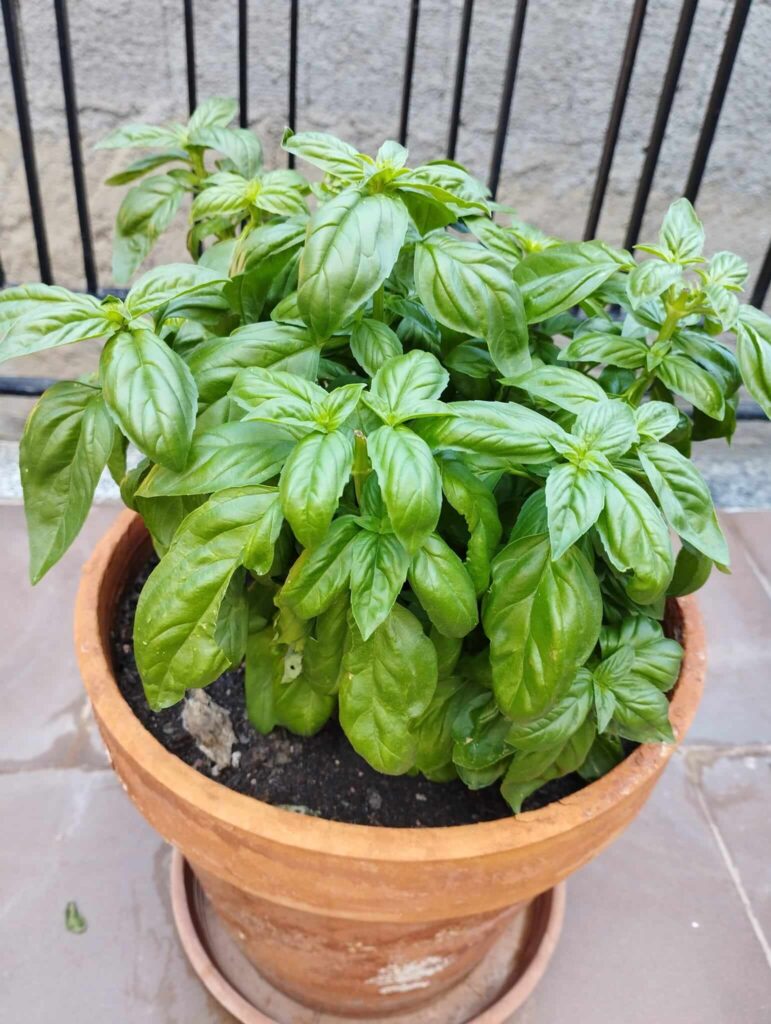
Herbs probably don’t come to mind when you hear the word “vegetable”, but they very much fall in the same category!
Herbs don’t require direct sunlight to grow. In fact, many prefer partial or shaded areas because too much sunlight can cause them to dry out or lose their flavor.
Here’s a list of herbs that thrive well in shaded areas: parsley, mint, cilantro, chives, rosemary, oregano, thyme and basil.
All of them are super easy to grow. On basil, I remind you that by pruning it in the right way, you can have a beautiful plant with ease. Follow my tricks on how to prune basil perfectly.
Bok Choy
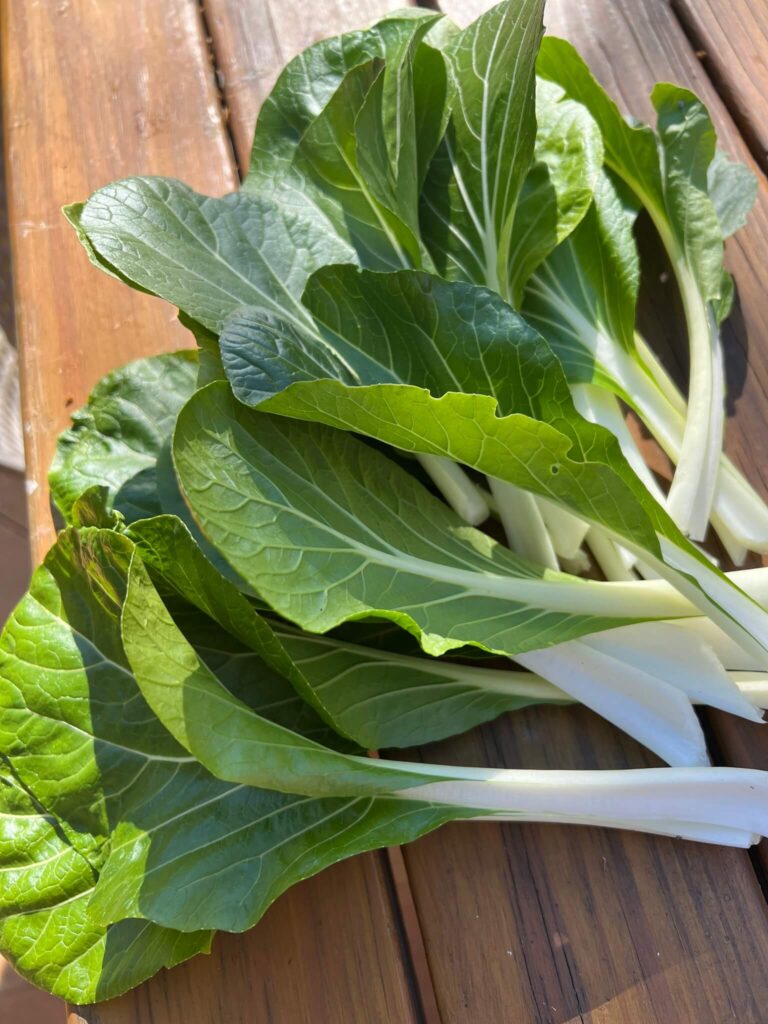
Bok Choy produces tender and more flavorful leaves when grown in shade. It grows best with 3 to 5 hours of sunlight, but can tolerate as little as 2 hours.
Bok Choy planted in full sun tends to bolt quickly, resulting in bitter leaves as it focuses all its energy toward flowering. Growing it in partial shade prevents leaf burn and encourages steady, leafy growth.
It’s also a very fast-growing crop, which is why you can find it in the list of veggies that can grow in less than a month.
Carrots
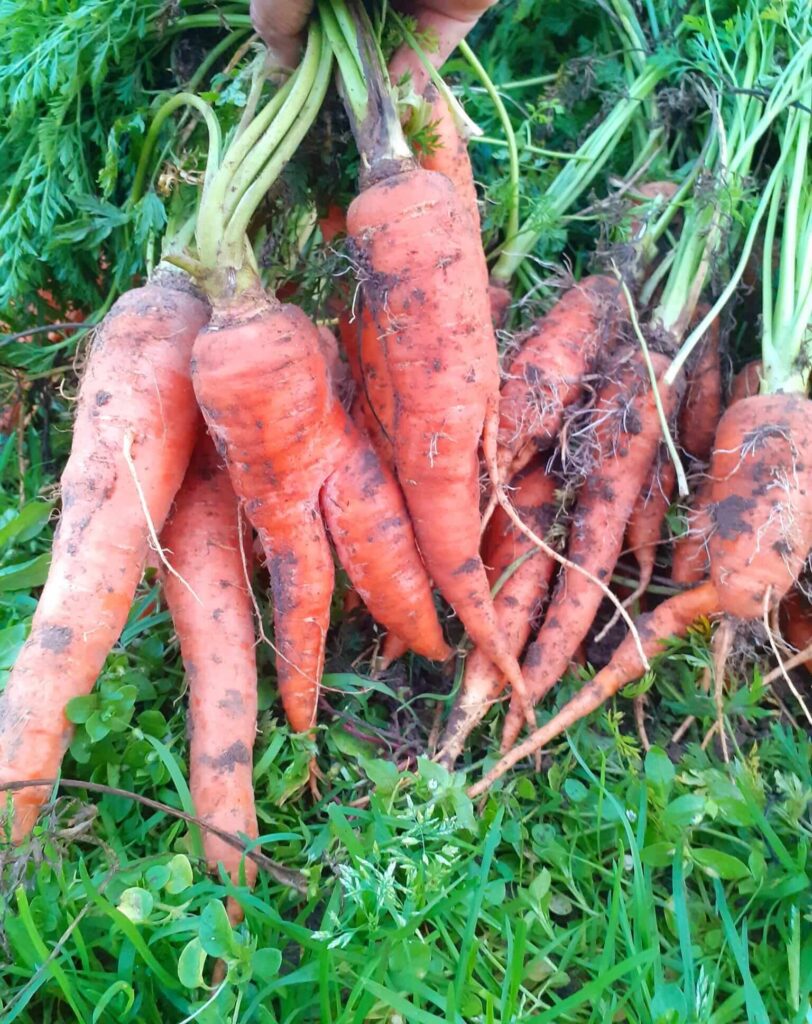
You read that right; carrots do, in fact, grow in shade! They might be a bit shorter, but they can still be just as sweet.
Planting them in partial shade is a good choice, especially during the summer if you live in a very hot area and temperatures get quite high.
The ideal thing would be to plant carrots in spring and fall in loose, nutrient-rich, well-draining soil. They should be ready to harvest 60 to 80 days after sowing.
Kale
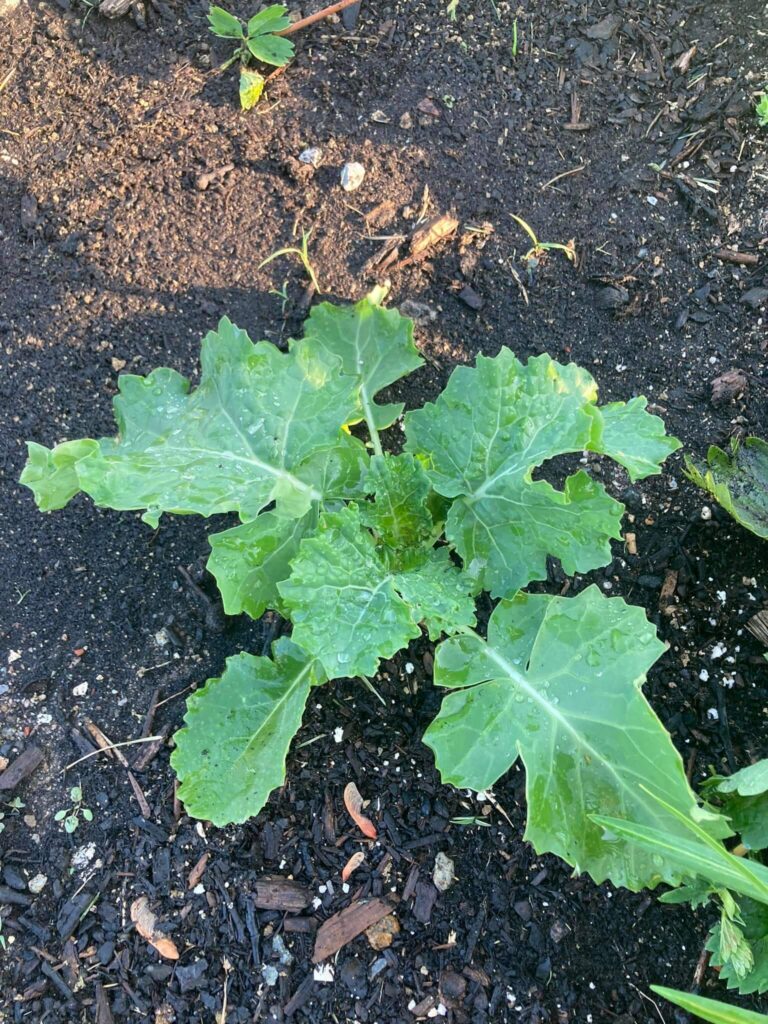
Kale is a cool-weather crop, meaning it thrives in cooler temperatures. It’s relatively shade-tolerant and can produce edible leaves in areas that receive less than 6 hours of sunlight per day.
Kale grows pretty fast, too, taking around 50 to 95 days from seed to harvest. Plant it in late winter or early spring.
Remember that kale prefers rich but firm soil (though it will grow in most soil types).
Beets
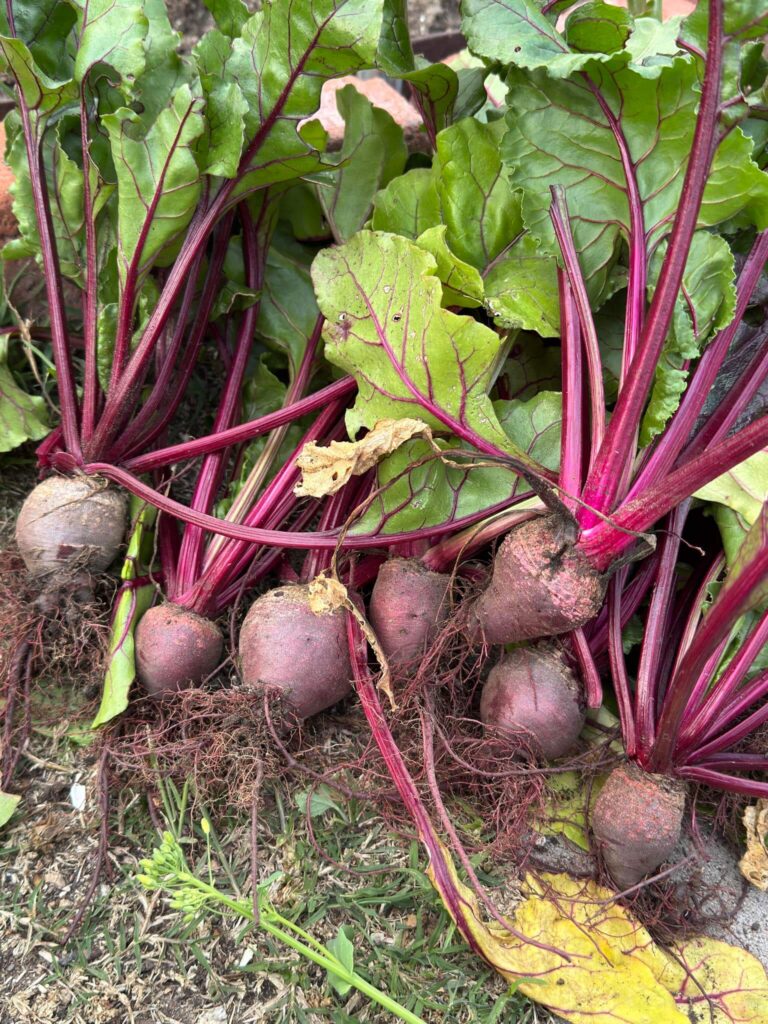
Beets can tolerate partial shade and near-freezing temperatures, making them excellent winter crops.
The roots may grow smaller without the full six hours of sunlight (as you can see from the picture above) but they won’t be any less sweet or nutritious.
Unlike kale, beets prefer loose soil, even better if compost-rich and well-drained. I plant them two to three weeks before the last expected frost, and they turn out just perfect.

